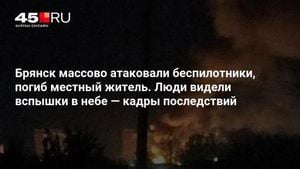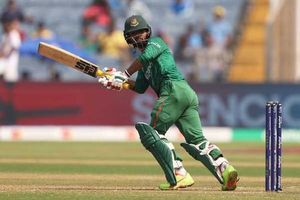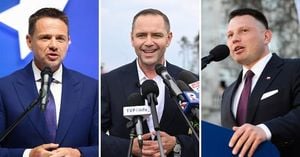In a lively pre-election atmosphere, a debate held in Końskie on April 11, 2025, showcased the political dynamics ahead of Poland's upcoming presidential elections. The debate, which concluded around 11:30 PM and lasted nearly three hours, featured eight candidates vying for the presidency, including notable figures like Karol Nawrocki and Szymon Hołownia.
Despite the high stakes, the evening was not without its controversies. Karol Nawrocki, representing the ruling party, made headlines by echoing a gesture from 2015, when he placed a rainbow flag in front of rival candidate Rafał Trzaskowski. This move was reminiscent of Andrzej Duda's infamous act during his campaign, where he placed a party banner in front of then-incumbent Bronisław Komorowski. Trzaskowski, who is affiliated with the Civic Coalition (KO), quickly hid the flag, which was later requested by fellow candidate Magdalena Biejat.
The debate also revealed a stark divide in opinions, particularly with Maciej Maciak's anti-Ukrainian and pro-Russian statements, which drew criticism from various quarters. While Nawrocki's performance was noted as competent, he faced moments of embarrassment due to his apparent political naivety. Observers noted that Trzaskowski may have fared better in a one-on-one debate against Nawrocki, as the presence of multiple candidates diluted his impact.
Interestingly, two candidates, Sławomir Mentzen and Grzegorz Braun, were absent from the debate. Speculation arose regarding their absence, with some suggesting they may have coordinated to avoid direct confrontation.
The Końskie debate was part of a larger electoral strategy, with public interest in further debates evident from recent polling data. A survey conducted by Opinia24 for TVN24 and "Fakty" TVN revealed that 62% of respondents believe a debate between Trzaskowski and Nawrocki should occur before the first round of elections. Only 25% opposed such a debate, while 13% remained undecided. This reflects a significant public appetite for direct engagement between the leading candidates.
Meanwhile, the presidential debate organized by Telewizja Republika, Telewizja wPolsce24, and Telewizja Trwam took place earlier that evening at 6:50 PM, drawing a diverse crowd of candidates, but notably missing Trzaskowski, who opted for a separate event organized by his campaign team in a nearby hall. This decision led to confusion, as candidates from the first debate expressed their intention to attend Trzaskowski's event, resulting in delays.
As the first round of the presidential elections approaches on May 18, 2025, the political landscape remains fluid. Polls indicate that Trzaskowski and Nawrocki are the frontrunners likely to advance to the second round, which is scheduled for June 1, 2025. Current surveys show Trzaskowski holding a slight lead over Nawrocki, setting the stage for a competitive race.
Other candidates in the fray include Szymon Hołownia, Magdalena Biejat, Krzysztof Stanowski, Joanna Senyszyn, and Marek Jakubiak, all of whom are vying for a chance to make their mark in the upcoming elections.
The debates in Końskie not only highlighted the candidates' positions but also underscored the increasing polarization within Polish politics. With the election date fast approaching, the urgency for candidates to connect with voters and articulate their visions for Poland has never been more critical.
As the candidates prepare for the next stages of their campaigns, the question remains: will the public's demand for more direct debates influence the trajectory of this election? The coming weeks will be crucial as candidates seek to solidify their positions and engage with the electorate.
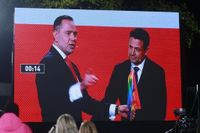
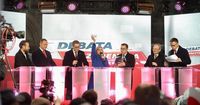
![Dwie debaty w Końskich: Chaos, przepychanki, tęczowa flaga [ZAPIS RELACJI]](https://thumbor.evrimagaci.org/9Ard_EmqS76y8o3C6G5eSVgnq5U=/200x0/tpg%2Fsources%2F15594930-9020-4bdd-8675-8fb93bded1f3.jpeg)
